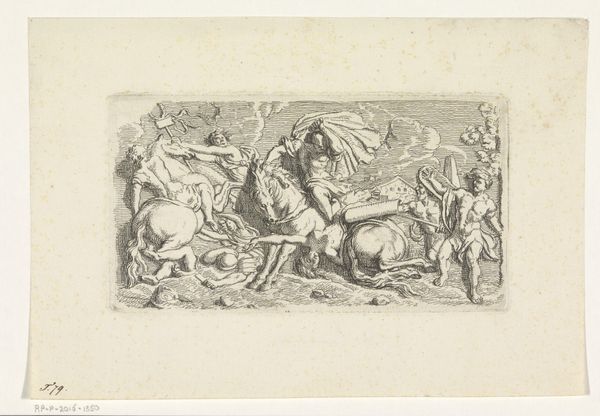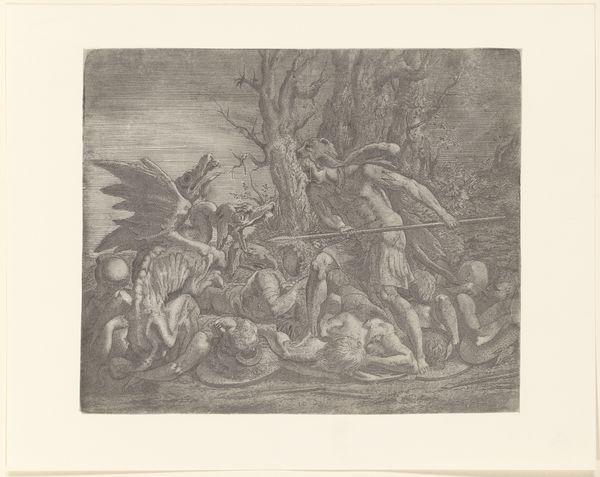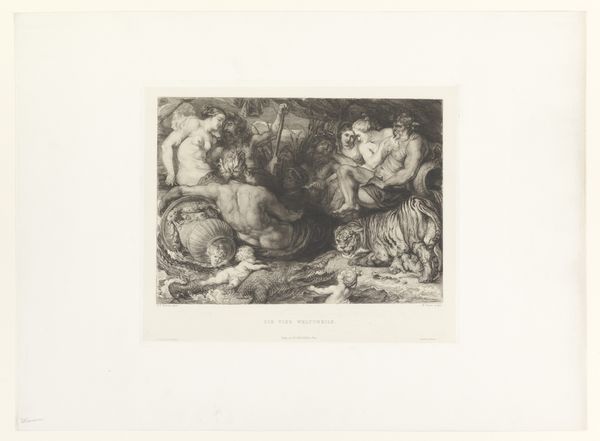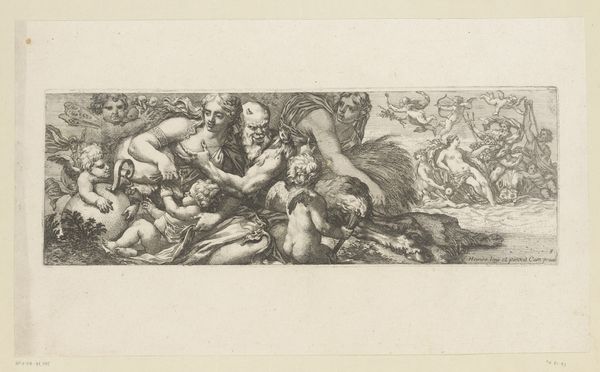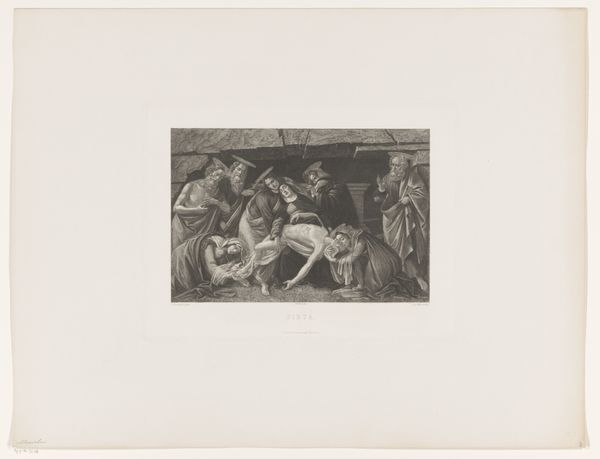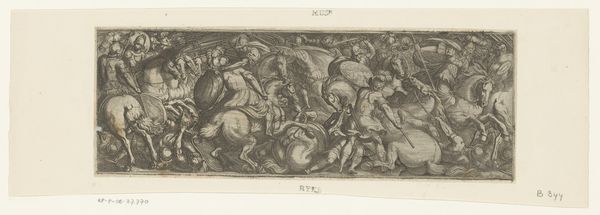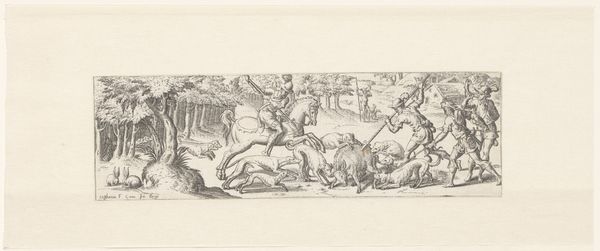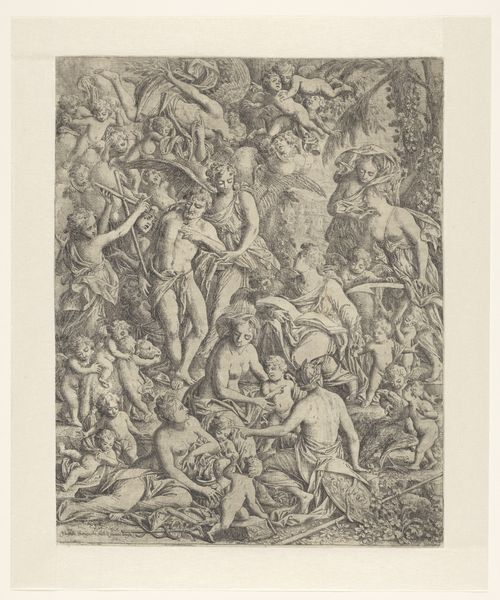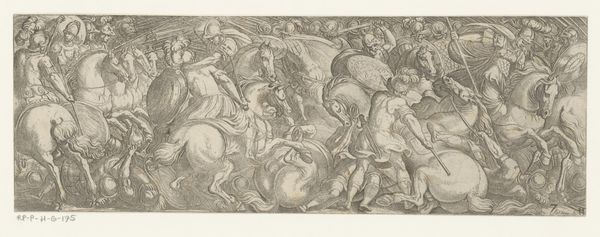
print, engraving
#
animal
# print
#
old engraving style
#
figuration
#
form
#
11_renaissance
#
pencil drawing
#
line
#
history-painting
#
northern-renaissance
#
engraving
Dimensions: height 214 mm, width 319 mm
Copyright: Rijks Museum: Open Domain
Editor: So, here we have *Fighting Horses*, an engraving from around 1511-1575, created by an anonymous artist. There's such dynamic energy in this composition, so much chaotic movement. What socio-political context might have inspired such a piece? Curator: That's a great question! This period, the Renaissance, saw the rise of humanism and a renewed interest in classical antiquity. The dynamic energy you observe may reflect the era’s societal upheavals, like the many wars of the time. Think about how powerful ruling families used art to project authority. Does this image reinforce or challenge their dominance, and how would such a piece be viewed by the common person? Editor: I see what you mean! If wealthy families influenced art production, wouldn’t they commission imagery that emphasizes their strength, like imposing equestrian portraits of leaders? These horses are certainly powerful, but they seem to reflect discord more than anything. Curator: Exactly. And how was the "public" defined then? Who would have access to such prints, and what messages were they receiving from them? Note also how the form refers to art historical themes of conflict or struggle. Can you relate this print to classical art such as friezes and relief carvings of the battles of gods? Editor: Now I see how that classical connection influences this work, even as the artist subverts any clear message of victory or power. Considering it's a print, more people likely had access, but its interpretation still depended on their own circumstances. Curator: Precisely. Reflecting on the public's experience of this work, what lasting impressions remain regarding how the arts communicate themes of conflict during this important period of history? Editor: It makes me realize that even something as seemingly straightforward as a group of fighting horses carries complex social and political weight, depending on who’s looking at it, and *when*. Thanks! Curator: A fruitful investigation of the cultural complexities underlying works of art. Well done.
Comments
No comments
Be the first to comment and join the conversation on the ultimate creative platform.
